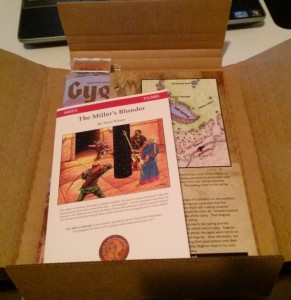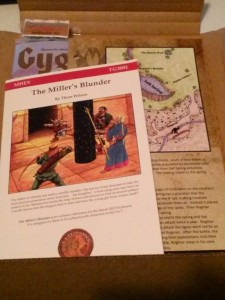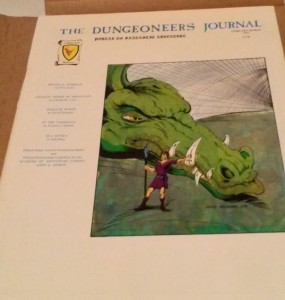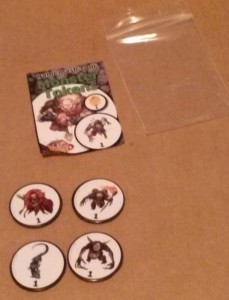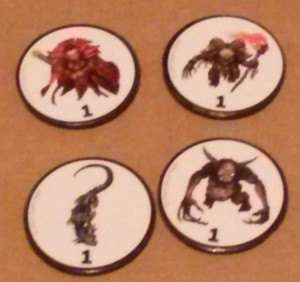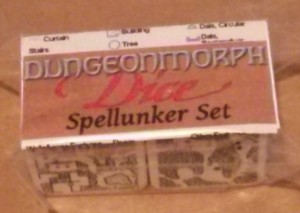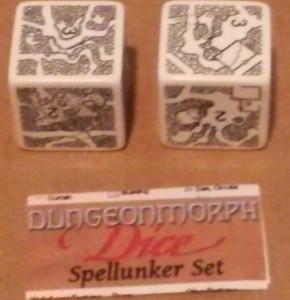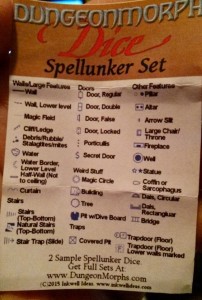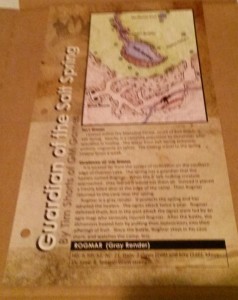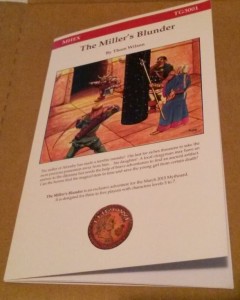F – Farmers/Feeding
Any sizable population needs to eat. There is limited potential to grow food within the city, unless there is a very regimented layout and everyone has access to garden space. There will be farmland nearby, or within easy shipping distance.
For example, when Rome conquered Egypt, they did so in part, to control the grain from Egypt – it was the bread basket for Rome with shipments about three days out from Rome, as I recall. Unseasonable storms and shipwrecks of grain shipments that caused a delay would lead to unrest. The grain ships were the size of the large shipping vessels of later centuries, many with two or three masts. Something not commonly mentioned in school. [I can’t seem to find the book I have where I read about this, and don’t recall the title.]
Cattle or other herds used for meat would also need to be close. Unless salted or cured, meat would not keep long. Thus there would be a market where livestock is slaughtered and the leather makers get the hides, the butchers get the meat, and the glue makers get the bones. There are other groups related to animal slaughter, such as drovers, herdsmen, stockyards, etc. Typically, animals were most often kept for their value in helping to plow or harvest, or the ability to harvest their wool or hair. Meat tended to be a rare part of a peasant’s diet, other than fish or fowl, most meat would be a rabbit or squirrel.
For a collapsed city, the remnants of surrounding farms and the stockyards and slaughter operations would be evident. Small hamlets where the farmers and resident smiths and carpenters and wainwrights lived to support an area of farmland. The module The Village of Hommlet is a farming hamlet with many adherents to druidical teachings and a decent level druid to lead the flock with a holy grove in the center of town, and a low level assistant. What kind of bonuses would such a farming community have to their output with druids around? They would easily have a surplus for sale or trade.
It is important to keep in mind that a portion of crops had to be kept back for planting the next year. Any famine that caused them to resort to eating their seeds for the next year’s planting would be devastating. If this happens, how far do they have to travel to get seeds for next year’s crops? In some areas, this could force a mass migration to get to an area where seed was available for planting.
Surplus grain that wasn’t sold is easily converted to beer. If fermentation is known in your world, the first step in making whisky is to make beer. The grains left after the beer making stage can be used for animal feed. Agrarian societies tended to use all they could and minimize waste.
My mother once told me that she asked her mother what she missed about living on the farm, where my grandmother grew up. My grandmother answered, “Fried blood.” That sounds really gross to me. I have no idea how it was prepared. I have an image of an iron skillet on a wood or gas stove, with cooking oil (lard) and adding blood from the latest beef or hog slaughter. For all I know, it might have been mixed with flour or cornmeal.
Farms will be on land that drains well, so land that floods every year after planting time will not be planted. Bottom land that floods unpredictably might be planted as it is today, but unless they have discovered marine cement like the ancient Romans, and use lots of labor or lots of magic to build flood control levies, the rivers will change course and flood far and wide. Just read about the floods in the 1930’s and 40’s that lead the Army Corps of Engineers to implement flood control with dams and levies to stabilize the course of the major rivers.
There are many kinds of natural disasters that can lead to crop failure:
- Floods (Unless it is something like the annual flooding of the Nile to deposit silt. That is required for a decent crop in that arid climate.)
- Droughts
- Hail (after the crop has sprouted)
- Frost (on tree buds or sprouted crops)
- Unseasonable Temperatures (Extremes of cold delay planting or slow growth, and heat burns up plants even with plentiful water.*)
- Naturally occurring disease or blight
- Naturally occurring insect swarms or overabundance of crop pests (Without insecticides expect worms in apples, etc.)
- Disease among the horses, mules, oxen, or whatever plow animal predominates, reducing the volume of land made ready to plant, if it comes before or during plowing.
- Disease among farm workers during the time for plowing, planting, watering, or harvesting.
Unnatural occurrences affecting crops:
- Invading Armies Burn Crops
- Rampaging Monsters Uproot/Dig Up/Pull Up/Burn/Freeze/Etc.
- Rampaging Monsters go after farmers and livestock.
- Divine Intervention at the behest of the evil big bad, or some good big good.
- Area druids, clerics, and magic users coming together to save crops, if they’re the good guys, or destroy them if they’re bad guys or at war with a nation.
- Any natural disease can be caused by an evil cleric.
There are lots of simple engineering projects that ancient civilizations used that might be evident in your campaign.
- Terraces (Hilly or mountainous terrain will use terraces for flat area for growing crops. Only the sheerest of cliffs will not have a terrace. The Incas had impressive terraces in the Andes.)
- Irrigation Canals (Long distance transport can be 20 feet deep and 50 feet wide. Smaller branches to agricultural lands will be shallower and narrower, until there is a ditch perhaps 2 or 3 feet deep and as much wide that is tapped to let water onto the fields.)
- Irrigation canals could tie into navigation canals, if it would not limit the effectiveness of the navigation canal.
- Aqueducts could carry water to hard to reach farmland.
Manure and composted vegetable matter would be the primary fertilizer. Manure was usually reserved for the gardens near farms. In your game, you might have cart loads or wagon loads of manure hauled from the king’s stables to the royal gardens or royal fields.
Every farmhouse will have a garden for herbs and vegetables for the farm family, and surplus for sale. Are there root cellars to keep fruits and vegetables cool and dry into the winter? What methods of preserving fruits and vegetables exist? The most basic is sun drying. Lay out on some sort of cloth or tarp slices of thicker fruit to dry. Smaller fruit, like grapes are laid out whole and dried for raisins, and plumbs for prunes. My last great-grand aunt (my grandfather’s youngest aunt) lived into her 90’s, when I was in my early 20’s. She would lay out a cloth on her bed covered with apple slices and open the curtains to dry them.
Ice houses could exist in areas where it freezes or near mountains. Until the development of mechanical refrigeration, ice would be harvested from lakes and ponds and put in underground ice houses. Dirt, sand, clay, and straw were used to maintain a steady temperature. Ice was able to be kept into the summer months. Toss in a wizard who can make a wall of ice and you have a year round deep freeze, or an air conditioner.
Cheese making is an early technology. Milk from any animal will not keep long without refrigeration and pasteurizing. The best long term storage of milk is to make cheese. Cheese properly sealed in wax will keep for centuries. Butter is related to cheese making. It can last several weeks if it doesn’t get too hot for too long.
Are there beekeepers? Without beekeepers, honey would be more rare and expensive, since it would all be wild honey. This would make mead non-existent to very rare. Honey does not rot, if it dries out just add water and heat it. I have an idea for giant bees being used for an apiary. Perhaps giants would use such bees.
Is the process of pickling known? You can’t have pickles without this. Nearly anything can be pickled, including meat.
Canning was not discovered until the late 1700’s or early 1800’s. Napoleon funded early efforts at canning to help feed his army. Home canning using Mason jars is not that old. Would the quality of glass and pressure cookers be available to support canning? I don’t see that in my fantasy RPG, but if it works for you, go for it.
Is crop rotation practiced or known? It depends on the degree of realism in your game. Hand wave it unless it serves as a plot point, is my opinion. In the Medieval period crop rotation was letting land lie fallow, unused, for a season or two to renew itself. It was not until much later that it was realized that some crops used up certain things in the soil and other crops put it back. The prime example is corn (maize) using nitrogen and legumes, like peanuts or beans fixing nitrogen in the soil.
Giant or miniature animals.
In a fantasy setting what effect would there be on agriculture if giant or miniature versions of farm animals were used by human sized races? Huge horses and oxen could plow more land and give more manure. However, larger animals require more feed. Miniature as in the fantasy miniature animals could be used to plow gardens or small terraces. Specialized fruits and vegetables might require either giant or miniature animals in the planting for harvest. An extravagant ruler might delight in having miniature horses plow his personal garden for his own table. Of course, halflings would tend to use smaller animals and giants that planted would use giant horses.
Finally, a website I discovered in early March, Lost Kingdom, has many interesting articles on how medieval life can inform fantasy RPGs. I already mentioned The Porcelain Argument in a blog posting last month.
“Surplus food allows cities, trade and a large standing military – all the characteristics of a formidable nation.” From The Porcelain Argument at Lost Kingdom.
Various types of medieval farming implements are discussed here, at Lost Kingdom. I added a note to their article: “The development of the horse collar enabled the move to horses and mules for plowing. The collar distributed the weight on the horse and did not constrict its trachea, and gave it 50% greater capacity to work. The horse then could work more hours than an ox. This lead to the horse replacing the ox in many agricultural areas of Europe.” See Wikipedia.
The Lost Kingdom also has an excellent article on the Farming Year. One thing this article did not mention was pollarding. It was a system of pruning trees for either animal fodder, called pollard hay, or for wood, usually used for staves and poles. Since pollarded trees tend to live longer, I can see druids being in favor of this form of tree harvest.
* Three years ago we had extreme heat and I kept my garden watered. Most of it burnt up, but my pumpkins and squash went crazy.

